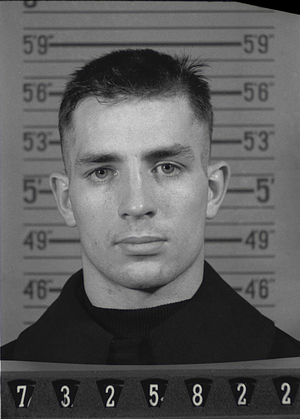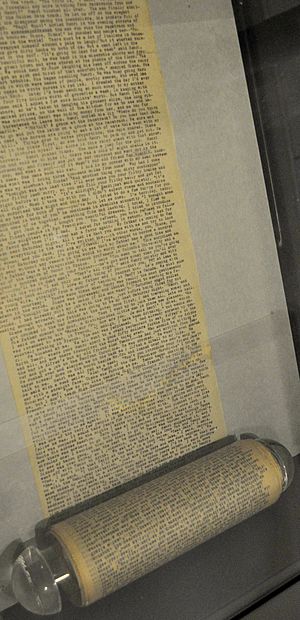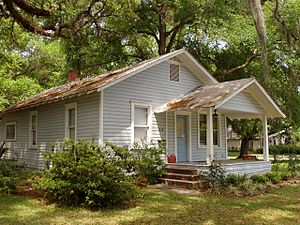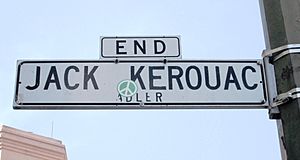Jack Kerouac facts for kids
Quick facts for kids
Jack Kerouac
|
|
|---|---|

Jack Kerouac by Tom Palumbo circa 1956
|
|
| Born | Jean-Louis Kérouac March 12, 1922 Lowell, Massachusetts, U.S. |
| Died | October 21, 1969 (aged 47) St. Petersburg, Florida, U.S. |
| Occupation | Poet, novelist |
| Nationality | American |
| Alma mater | Columbia University |
| Literary movement | Beat |
| Notable works | On the Road The Dharma Bums Big Sur Desolation Angels |
| Spouse |
Edie Parker
(m. 1944–1948)Joan Haverty
(m. 1950–1951)Stella Sampas
(m. 1966–1969) |
| Signature | |
 |
|
Jean-Louis Lebris de Kerouac (born March 12, 1922 – died October 21, 1969), known as Jack Kerouac, was an American author and poet. He was a key part of the Beat Generation movement. This group of writers and artists became famous in the 1950s and 1960s. Kerouac even gave the movement its name.
His most famous book was a long novel called On the Road. It was published in 1957. Kerouac wrote the final version of On the Road in just three weeks in 1951. He typed it on one long roll of teletype paper. He liked using paper rolls because he didn't have to stop to change pages.
Kerouac was friends with many other writers. These included Allen Ginsberg, William S. Burroughs, Lawrence Ferlinghetti, and Gregory Corso. Most of Kerouac's stories were based on his own life. But he changed names and details to protect people's privacy. He wrote a lot about his friend Neal Cassady, who was called "Dean Moriarty" in On the Road. Kerouac's books influenced many later writers, poets, and musicians in the 1960s. He also changed how Americans saw themselves and their country.
Contents
Jack Kerouac's Early Life
Kerouac was born in Lowell, Massachusetts. His parents, Leo and Gabrielle, were French-Canadian. He was their youngest of three children. He spoke only French until he started school. His family was Roman Catholic.
His father was a printer. This made Kerouac interested in books and printed things. He liked to make his own handwritten newspapers and books. He enjoyed reading and copied the styles of writers he admired. He became a very fast typist, typing over 100 words per minute.
Kerouac was a good athlete. He earned a football scholarship to Columbia University. However, an injury during a practice game ended his football career. He left Columbia to focus on writing stories and plays. At college, he met Allen Ginsberg. Their group of friends included many future writers and artists, like William S. Burroughs.
During World War II, Kerouac served in the Merchant Marine. This made him a veteran of the American military. He kept journals of his experiences. He later used these journals to write other books. He was honorably discharged from military service in 1943. Kerouac was proud to be an American and always spoke well of his country.
Becoming Famous
Viking Press agreed to publish On the Road. This happened after many changes were made to the story. The novel became a bestseller. After years of little success, Kerouac became a celebrity. Magazines started asking him for articles and essays. He appeared on many television shows, including The Steve Allen Show. Steve Allen liked Kerouac. They even recorded an album together, with Kerouac reading aloud and Allen playing piano. Kerouac recorded another album later with jazz musicians Al Cohn and Zoot Sims.
As Kerouac and his friends became famous, people noticed a new style among them. The mainstream media wrote about it. Kerouac was asked to describe his generation. He explained that modern life had "beaten" normal ways of thinking out of them. They also loved the "beat" of bebop and jazz music. So, he said, "I guess you could say we're a beat generation."
"Beat Generation" became the name for this new style from artists and writers in New York and San Francisco. Kerouac's friends and others who copied them were called the Beats. The media even called Kerouac the "King of the Beats."
One problem Kerouac had with fame was that people thought he did everything he wrote about. Kerouac was shy. He started to pull away from the public. He became almost a recluse in the house he bought for his mother.
Later Life and Influence
During the 1960s, American society changed a lot. The Beats had a part in these changes. Writers liked Kerouac's free writing style. It made them think more about their own writing. They learned how to study life and express themselves better. Many musicians were also influenced by Kerouac's books. These included Bob Dylan, Donovan, and The Doors.
Kerouac was more disappointed than happy to be famous. He liked some of what he inspired. But he felt that the public often misunderstood his books.
Kerouac kept writing new material until the last day of his life. He died in St. Petersburg, Florida. This happened during emergency surgery to try to stop bleeding. He was buried in his hometown. At first, he was barely remembered there. Even though he was world famous, Kerouac earned very little money as a writer. He died with only a few hundred dollars in the bank. It took years for his grave to get a headstone.
Legacy and Remembrance
Less than half of Kerouac's writings were published while he was alive. But almost all of them are available now. The books published later earned much more money than his most famous works. Today, his hometown of Lowell remembers Kerouac with a memorial. They also hold cultural events every year. His grave now has a headstone that says, "He honored life." A street in Lowell was renamed "Jack Kerouac Alley" to honor him.
Images for kids
-
On the Road excerpt in the center of Jack Kerouac Alley
See also
 In Spanish: Jack Kerouac para niños
In Spanish: Jack Kerouac para niños












